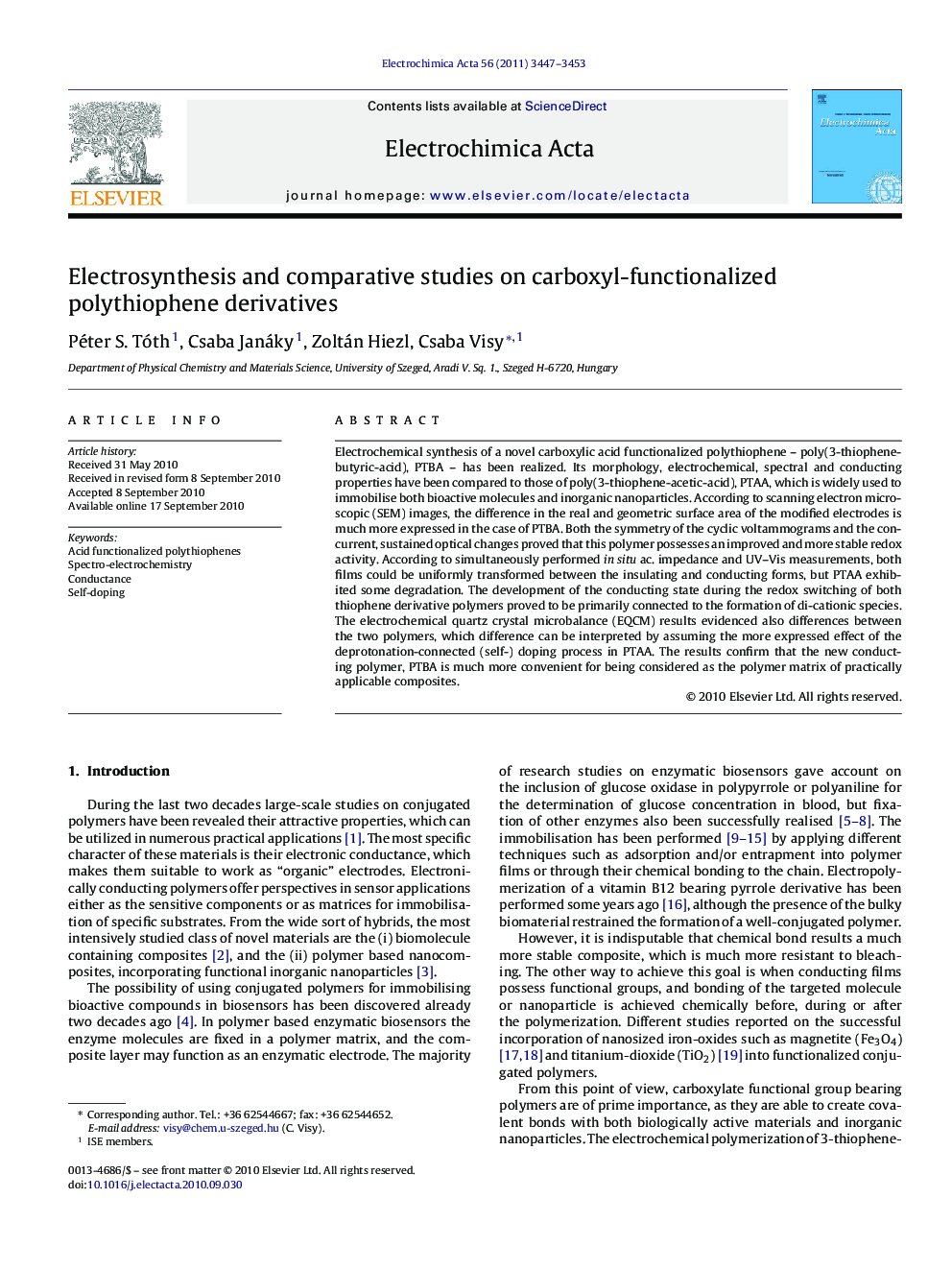| Article ID | Journal | Published Year | Pages | File Type |
|---|---|---|---|---|
| 190157 | Electrochimica Acta | 2011 | 7 Pages |
Electrochemical synthesis of a novel carboxylic acid functionalized polythiophene – poly(3-thiophene-butyric-acid), PTBA – has been realized. Its morphology, electrochemical, spectral and conducting properties have been compared to those of poly(3-thiophene-acetic-acid), PTAA, which is widely used to immobilise both bioactive molecules and inorganic nanoparticles. According to scanning electron microscopic (SEM) images, the difference in the real and geometric surface area of the modified electrodes is much more expressed in the case of PTBA. Both the symmetry of the cyclic voltammograms and the concurrent, sustained optical changes proved that this polymer possesses an improved and more stable redox activity. According to simultaneously performed in situ ac. impedance and UV–Vis measurements, both films could be uniformly transformed between the insulating and conducting forms, but PTAA exhibited some degradation. The development of the conducting state during the redox switching of both thiophene derivative polymers proved to be primarily connected to the formation of di-cationic species. The electrochemical quartz crystal microbalance (EQCM) results evidenced also differences between the two polymers, which difference can be interpreted by assuming the more expressed effect of the deprotonation-connected (self-) doping process in PTAA. The results confirm that the new conducting polymer, PTBA is much more convenient for being considered as the polymer matrix of practically applicable composites.
